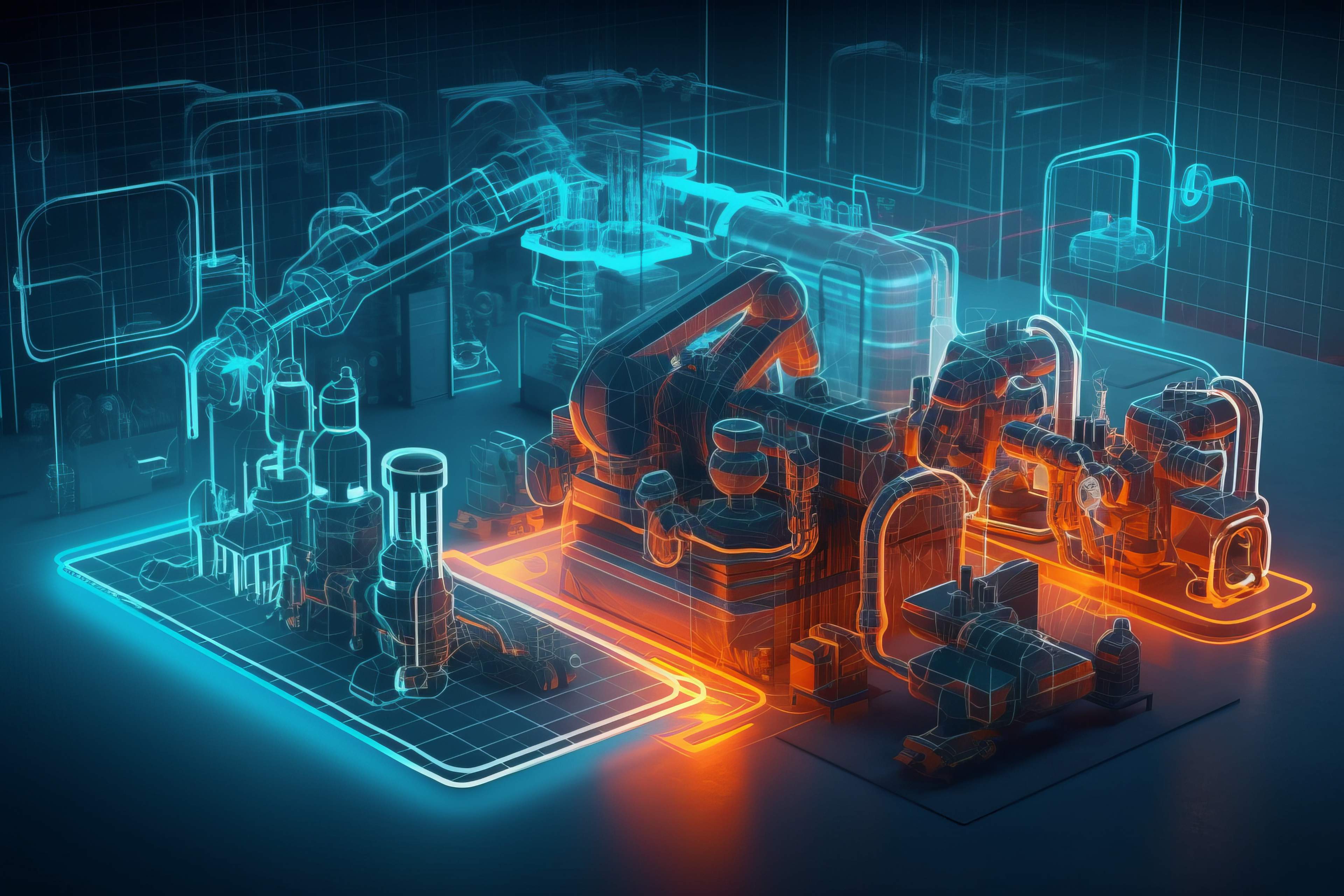Predictive maintenance (PdM) offers a software solution to a hardware problem: unscheduled breakdowns and equipment failures that cost industrial companies productive time. This approach to proactive maintenance for equipment marks the third phase in an evolution of maintenance approaches:
Reactive maintenance, in which a maintenance team performs routine maintenance on “healthy” equipment but waits until a part malfunctions or fails to perform any non-routine maintenance.
Preventive maintenance, in which a maintenance team performs certain maintenance tasks prior to equipment failure, based on historic data about what pieces tend to fail when and under what conditions.
Predictive maintenance, in which a maintenance team leverages real-time and historical data along with AI, ML, and other advanced analytics capabilities to predict and perform custom maintenance tasks before equipment failure or malfunction.
Anyone in logistics, manufacturing, and other industries that use heavy machinery can see immediately how predictive maintenance could prevent costly downtime. But the benefits of predictive maintenance actually go well beyond that: it can reduce material costs, reduce inventory carrying costs, reduce maintenance planning time, and improve overall compliance with HSE requirements.
In this article, we’ll examine those benefits in more depth and look at the challenges industrial organizations face in implementing predictive maintenance.
Related [podcast]: The future of predictive maintenance
Understanding predictive maintenance software
To work, predictive maintenance software requires several things: historical data, real-time data (often gathered by internet-connected sensors), an IoT platform to monitor sensor performance, and the software itself.
Let’s dive deeper into each of those.
Historical data includes data about equipment performance and breakdowns, as well as any data included in product data management (pdm) software. It’s not limited to straightforward details about which parts broke and how they were fixed; in fact, it’s most useful when it also includes contextual notes taken by the maintenance team, information on temperature and humidity conditions at the time of breakdown, and other contextual information.
Real-time data typically comes from a process called condition monitoring, which uses sensors communicating via IoT with the predictive maintenance software. Sensors on the equipment itself might gather information on vibration, temperature, sounds, and lubrication, all of which are leading indicators of equipment malfunction.
Sensors not attached to the equipment may also gather data on environmental conditions in the facility: temperature, humidity, etc. These conditions can have a significant impact on equipment’s performance over time.
Note: Choosing the right sensors is an important part of building or fueling successful predictive maintenance software. The capabilities of your sensors determine the quality of data you’re able to gather; as the quality of sensors declines so too does the forecasting and prediction capability of the predictive maintenance software algorithms powered by the data they gather.
The IoT (internet of things) platform tracks the sensors’ internet connection. In the event of problems, it can signal workers to investigate.
The predictive maintenance software itself processes real-time data from sensors and contextualizes it with historical data using data analytics, machine learning and automation / AI capabilities. Whereas a human monitoring the health of equipment can only consider a limited number of data points to assess whether a given vibration or temperature change is indicative of a problem, the software can process far more data points far more quickly.
As you can imagine, the ability to process so much data so fast leads to more accurate and timely assessments of what's happening with equipment and (if necessary) what actions to take.
Let’s take a look at the economic impact that can have on an organization.
Related [webinar]: The importance and promise of the fourth industrial revolution
Economic impact of predictive maintenance
Unplanned downtime costs industrial companies about $260,000 per hour, making it one of the most expensive things the industry has to deal with. What's more, the cause of unplanned downtime is equipment failure in about 42 percent of cases.
But the benefits of predictive maintenance go well beyond equipment downtime reduction. In fact, research from Deloitte suggests the benefits also include…
Material cost savings of five to 10 percent, thanks to reduced maintenance costs.
Reduced inventory carrying costs of 5 to 20 percent.
Increased equipment uptime and availability of 10 to 20 percent.
Reduced maintenance planning time of 20 to 50 percent and overall maintenance cost reductions of 5 to 10 percent, thanks in part to longer total asset lifespan.
While it’s perhaps not surprising that most industrial organizations have not yet embraced predictive maintenance, one finding from a recent Servicemax survey is particularly striking: as many as 70 percent of decision makers and service workers in industrial fields don’t have clear insight into asset health at their organization. They noted not being sure when their equipment is due for maintenance, upgrade, or replacement.
This is no less than shocking from a maintenance operations perspective: it’s nearly impossible to conduct effective asset management, asset performance management, or maintenance management without clear data about the condition of the critical assets in question.
But there's also a bright side: this finding also suggests that industrial organizations could see significant upside from simply collecting better data about the condition of their assets. The full path to predictive maintenance requires substantial investment (as we’ll discuss).
But, given how few industrial organizations have visibility into asset health today, even making incremental progress could lead to improved maintenance processes and material gains.
Operational efficiency and productivity
Decreasing downtime naturally also means increasing uptime, which translates to greater overall productivity and operational efficiency. But where exactly do those benefits come from? Two main sources:
Improved planning: When you can predict the maintenance needs of your equipment, you can plan maintenance activities for off-peak operation times.
Efficiency gains: When equipment doesn’t break down unexpectedly, operational efficiency of the entire organization improves. In addition to avoiding sudden breakdowns, predictive maintenance helps ensure equipment is operating at peak performance more often, again translating to increased efficiency.
Another important consideration for many industrial firms is talent. With experienced workers retiring in substantial numbers in many industries, coordinating work orders with the people who can carry them out is increasingly challenging.
Predictive maintenance helps avoid emergency situations, leading to smoother workflows and more cost-effective scheduling. Avoiding emergencies can also keep operational costs in check, not just in the form of reduced downtime but also in the form of reduced overtime pay.
Now let’s go one level deeper and look at how industrial organizations can leverage IoT and data analytics to enjoy these many benefits.
Leveraging IoT and data analytics
One potential data source for predictive maintenance software is a computerized maintenance management system (CMMS), where historical data about equipment and past maintenance may be stored.
This data can be sent to the predictive maintenance software and combined with real-time data collected via sensors and sent via IoT connections. The management software might process the data sets using various types of data analytics to assess equipment performance and make recommendations to the maintenance team.
For example, if sensor data from a piece of equipment shows vibration outside the normal range, the predictive maintenance software might then cull the CMMS software for historical data: has this piece of equipment ever experienced similar conditions? Have other similar pieces of equipment? If so, what was the cause? How did that situation impact performance? How might it progress if unaddressed? What maintenance strategies can be used to fix it? How successful have those strategies been in the past? How much did they cost? How long did repairs take?
And so on.
The software can process all those data points to recommend a course of action to the maintenance team: schedule maintenance within 120 hours, for example. This then empowers maintenance managers to choose an off-peak period in the next five days when a technician with the appropriate experience is scheduled to work.
Crucially, all of this happens without a machine ever going offline.
Strategic advantages beyond operational gains
Beyond the operational improvements outlined above, predictive maintenance can also offer strategic advantages to organizations that embrace it.
For example, these organizations may enjoy…
Competitive advantages: In industries where equipment reliability is a critical part of overall success, those that can increase uptime and decrease downtime naturally enjoy a competitive advantage.
Improved safety: Deloitte’s research notes that predictive maintenance software leads to better health, safety, and environment (HSE) compliance. Workplaces are safer when they can prevent unexpected (and often dangerous) equipment failures.
Lessened environmental impact: Workplaces with PdM software in place have greater visibility into the performance of their entire facility, which makes it easier to not only comply with environmental regulations but also demonstrate compliance. What's more, optimized maintenance schedules can translate to optimized energy use, and reduced equipment failures can translate to fewer downstream environmental impacts.
The benefits of embracing predictive maintenance software are many. So why isn’t every industrial organization racing to do it? Because it’s also challenging to adopt. Let’s take a quick look at some of the challenges and considerations that can stymie an organization as it transitions to using predictive maintenance software.
Challenges and considerations
As with any major changes, transitioning to predictive maintenance software requires a lot of upfront investment before an organization will see ROI. A few areas to consider:
Data: Predictive maintenance is fueled by data. To act as “fuel,” though, that data has to be in a usable format. For many industrial organizations, getting data into that usable format is in itself a major project. (For more about what it entails, check out our primer on data maturity.)
Compatibility issues: Depending on the age and condition of various equipment and technology in your facility, introducing PdM software may cause compatibility issues. How will the new software connect with existing software? Will you need to upgrade other parts of your facility (e.g., ensure adequate WiFi connectivity throughout) to power the PdM system?
Physical equipment: For many organizations, sensors alone will be a significant investment. And, as mentioned earlier, choosing the right sensor for the job is important; your sensors’ capabilities determine how accurate and reliable the outputs of your PdM software are.
Software: In addition to sensors to gather data, most organizations will have to either build or buy predictive maintenance software. Again, this is not only a financial investment; it requires investing time and energy in the research process to ensure you’re choosing a product that suits your long-term needs and that delivers valuable insights.
Training: Working with predictive maintenance software is different from traditional ways of handling maintenance. Your team will have to learn not only a new suite of software but also an entirely different way of working. Because the whole purpose of predictive maintenance is to improve workflows to avoid unplanned downtime, adopting PdM software will have ripple effects throughout your organization. When embracing PdM, it’s important to not only invest in training but also in inspiring adoption. It’s much easier to train workers when they’ve bought into the benefits of the new way of operating.
Talent: Depending on your current staff and the demands of your predictive maintenance solution, you may need to hire or train for new skill sets.
In addition to these challenges, which involve the actual transition to predictive maintenance, there are also post-adoption challenges to consider.
Chief among them is data security: when your organization is generating and transmitting more data than ever, keeping that data secure becomes a bigger and more critical task. This may mean expanding your data security or IT team, doing additional training around data security specifically, and even getting additional certifications to ensure you remain compliant.
Making an informed decision when considering predictive maintenance
While predictive maintenance can help improve several performance metrics for industrial organizations, it’s by no means a silver bullet. Nor is it a one-size-fits-all technology. For lower-cost and non-mission-critical equipment, in fact, predictive maintenance software may not be worth the upfront investment.
Industrial organizations interested in the many benefits predictive maintenance can provide should focus on assessing how PdM software might impact their long-term profitability, considering metrics such as upfront cost, time to ROI, and expected competitive cost of not embracing this technology.
Even this preliminary assessment requires complex calculations. If you’d like expert guidance in working through these considerations to determine whether adopting predictive maintenance software makes sense for your organization, please reach out. We’d love to hear about your current situation, your challenges, and your goals for switching to a predictive maintenance system.




